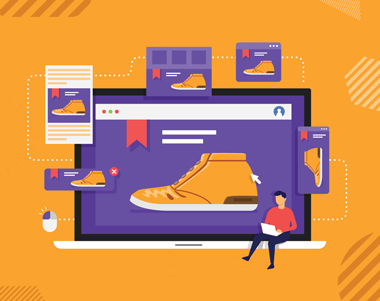Digi Says… “Mobile searches with the qualifier ‘for me’ have jumped more than 60% in the past two years.”

For many consumers, it’s not enough to find an insurance company, doctor, or a certain style of shoes. They want to find the product or service that’s right for them. This is a trend in search engine behavior that extends to all forms of marketing as consumers expect personalized experiences.
But not too personalized.
This is all too common on digital platforms. For example, you find a pair of shoes you like. Maybe you put them in a shopping cart. Then you start seeing ads for those shoes on every website you visit. Then you get an email reminding you to complete your purchase, along with other product recommendations based on your browsing and social media activity.
That’s the challenge for marketers today. How do you walk the fine line between satisfying consumer demand for personalization and relevance without creating the perception that you’re watching their every move?
What Research into Personalization Shows
Gartner researchers suggest creating personalized experiences, content and messaging that focus on helping your target audience. Then use select data points to craft a relevant message that focuses on the individual’s needs without getting too personal. According to a Gartner survey, this type of “tailored help” can increase impact by 20 percent.
Unfortunately, 88 percent of survey respondents said they didn’t receive “tailored help” from brands. Many companies make the mistake of using every piece of data available to trigger every emotion and logical thought process that affects an individual’s decision-making process.
This is more likely to turn off consumers than win their business. More than half of respondents said they’ll unsubscribe from a company’s communications if they think it’s “creepy.” 38 percent will stop buying from a company that goes too far with personalization.
The primary takeaway from this data is that personalization is welcome by your audience and beneficial to your organization. However, you risk losing a large percentage of your customers if personalization is perceived as obsessive or intrusive. Nobody likes to feel as if they’re being surveilled.
How Consumers Perceive Personalized Direct Mail
According to data reported by Small Business Trends, seven in 10 consumers view direct mail as more personal than the internet, which has long been touted for precise targeting and personalization capabilities. In fact, 54 percent want to receive direct mail for updates and promotions, far more than email, social media, mobile apps and text messages. 59 percent agree with the statement, “I enjoy getting postal mail from brands about new products.”
This creates a major competitive advantage for companies that integrate direct mail into their marketing strategies. Consumers expect mail to be personalized. They want to hear from brands by mail. This would indicate that your audience is less likely to perceive the experiences you provide as creepy or intrusive.
Direct mail allows you to deliver a personalized message to each individual in your target audience. No spam folders, no unsubscribes, no ad blockers. Actually, the recipient will probably be looking forward to hearing from you.
If you want to learn more about how to develop a direct mail campaign that strikes the right balance of personalization without creepiness, contact us today.



Comments